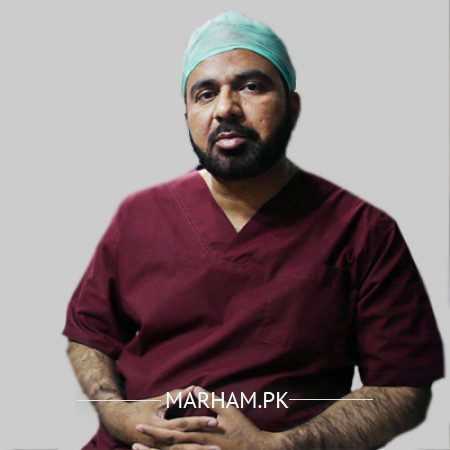A glaucoma is a group of eye diseases that damage the eye’s optic nerve and leads to blindness if left untreated. The optic nerve is a bundle of more than 1 million nerve fibers that connect the retina (a light-sensitive layer at the back of the eye) to the brain. A healthy optic nerve is necessary for good vision.
Glaucoma is one of the leading causes of blindness in the world and is listed as a priority eye disease by the World Health Organization (WHO). But, glaucoma is still under-diagnosed, even in developed countries.
Glaucoma is known as the silent thief of sight because at first, it has typically no symptoms. People mostly notice the signs of the disease when glaucoma becomes mild or advanced. Early detection is only possible with the regular checkups by your eye specialists. If you feel any problem related to your vision, you should immediately visit your doctor. Now you can find the Best Eye specialist in Lahore and other main cities of Pakistan through Marham.
Here are some important facts you should know to get a complete awareness of glaucoma.
What Causes Glaucoma?
A clear fluid continuously flows in and out of a space known as the anterior chamber of the eye. The fluid nourishes the nearby eye tissues. The fluid leaves this chamber through a structure known as “Angle”, which forms where cornea and iris (parts of the eye) meet. At this angle, a spongy meshwork is present through which the fluid drains.
Even though the drainage angle is “open” in Open–Angle Glaucoma, the fluid passes too slowly through the meshwork drain and this builds up pressure inside the eye to a level that damages the optic nerve.
High eye pressure or intraocular pressure (IOP) is the major risk factor for glaucoma. However, not all patients who have glaucoma have high intraocular pressure.
What Are The Risk Factors For Glaucoma?
Age is the most important risk factor for glaucoma. Individuals above 50-60 years have more chances of developing this disease. But this is also true that everyone is at risk of developing glaucoma from newborns to senior citizens. Young adults can also develop this disease but the risk increases with the advancement of the age.
Another risk factor is a family history. If you have any family member who has glaucoma, you should be conscious of your eye health.
Chronic diseases like hypertension and diabetes are also considered as the risk factors for developing glaucoma. Additional risk factors are eye trauma, use of steroids and near-sightedness. Now you can find the Best Eye specialist in Islamabad and other main cities of Pakistan through Marham.
What Are The Signs and Symptoms of Glaucoma?
In the start, open-angle glaucoma has no symptom. No pain is associated with high eye pressure and no changes in vision. But gradually vision loss begins with the peripheral or side vision. In this situation, individuals may compensate for this unconsciously by turning their head to the side, and may not notice anything until significant vision is lost. The best way to protect your vision is an early diagnosis. Glaucoma cannot be cured completely, rather it’s a manageable disease. So regular testing is the only way to protect your sight from glaucoma or in other words from blindness.
Read Also: 15 Alarming Things Your Eyes Are Trying to Tell You about Your Health
As glaucoma progresses, blank spots appear in an individual’s field of vision. A person with glaucoma usually cannot notice this change in vision in daily routine activities. Meanwhile, the optic nerve is significantly damaged and then the person feels the large blank spots in vision. If it remains untreated, complete loss of vision may occur that cannot be restored.
Diagnosis
Glaucoma is detected through a comprehensive dilated eye exam that includes the following;
Visual acuity test: This eye chart test measures how well you see at various distances.
Visual field test: This test measures your peripheral (side vision) and helps your doctor to diagnose if you have lost side vision (a sign of glaucoma).
Dilated eye exam: In this test, drops are put in your eyes to dilate the pupils. Your doctor uses a special magnifying lens to see your retina and optic nerve for signs of damage and other eye problems. After the exam, your close –up vision may remain blurred for several hours.
Tonometry: It is the measurement of the pressure inside the eye by using an instrument called a tonometer. This detection of pressure inside the eye helps in diagnosing glaucoma.
Pachymetry: It is the measurement of your cornea. Your doctor applies a numbing drop to your eye and uses an ultrasonic wave instrument to measure the thickness of your cornea.
If you have risk factors for glaucoma, you should have a dilated eye exam regularly. Your doctor will tell you how often you need the eye exam.
What Is The Treatment of Glaucoma?
Early diagnosis is the best way to manage glaucoma and slowing the progression of the optic nerve damage with the treatment. Your doctor may prescribe you eye drops, pills, laser treatment or suggest you a specific type of surgery. This treatment may save the remaining vision but cannot restore the damage occurred due to glaucoma.
Medicines, in the form of pills or drops, are the most common early treatment of the disease. Some medicines are used for lowering the eye pressure and some are used to reduce the production of fluid in the eye. Others lower pressure by helping the fluid drainage from the eye.
Must Read: 5 Best Eye Specialists in Karachi
Side effects of these medicines can be seen in some patients, like redness or itching in the eyes. If you are taking any other medicine or supplement, you should tell your doctor about it. So drug interactions can be prevented.
If you have any problem with one medicine, you should tell your doctor about it and he can change your medicine and its dose.
You should not miss the dose of your medicine because of an unpleasant side effect. Rather you should consult your doctor and he can make the changes in your prescription. Glaucoma medicines need to be taken regularly as directed by your doctor. Because of the symptom-less nature of this disease, people may think to stop the treatment or they forget to take the dose. But it is very important for your vision that you take your medicine regularly.
The laser helps fluid drain out of the eye. You may need to take your glaucoma medicines after this procedure. This laser surgery is performed in your doctor’s clinic. Before the surgery, numbing drops are administered to your eye. You have to sit facing a specialized laser machine, and a high-intensity beam of light is aimed through the lens and reflected onto the meshwork in your eye. You may see flashes of green or red light. The laser makes several evenly spaced burns that stretch the drainage holes in the meshwork (in your eye). This allows the fluid to drain better through the meshwork.
This laser surgery may cause inflammation in your eyes, and your doctor will prescribe you medication for that. You need several follow –up visits to your doctor for further monitoring of your eye and eye pressure.
If you have glaucoma in both eyes, one eye will be treated at a time. And the surgery of the other eye will be scheduled with the gap of several weeks. Studies show that laser treatment is very helpful in reducing eye pressure. But the disease can progress after some time. And in this situation, you need further treatment.
Conventional surgery is done to make a new opening for the fluid to leave the eye. This surgery is often done after medicines and laser surgery have failed to control eye pressure.
It is performed in the operation room and local anesthesia is used to numb the eye. A small piece of tissue is removed to create a new channel for the fluid to drain from the eye. You need to put eye drops for several weeks after the surgery to fight infections and inflammation.
Conventional surgery is performed on one eye at a time. And the operation for other is four to six weeks apart. This surgery is 60 to 80 percent effective in lowering the eye pressure. If the new drainage opening narrows, a second surgery may be needed.
Your eye vision may be not as good as it was before the conventional surgery. This surgery can cause side effects like cataract, inflammation, infection inside the eyes, or low eye pressure problems. This surgery results best if you have not had any previous eye surgery like cataract operation.
Eye Pressure and Glaucoma
Not every person with elevated eye pressure will develop glaucoma. Rather every individual’s optic nerve has a different capacity of tolerating the eye pressure. And hence the optic nerve damage is according to it. Some people can tolerate high eye pressure better than others and their eyes remain normal at that eye pressure.
Whether you develop glaucoma or not can be detected by your doctor with the dilated eye exam. In which your doctor can examine what eye pressure is normal for you.
Similarly, glaucoma can develop without increasing your eye pressure. This type of glaucoma is known as low tension or normal tension glaucoma. It is another type of open-angle glaucoma. So it should be kept in mind that only increase in eye pressure is not the cause of glaucoma. Some people can develop glaucoma even if their eye pressure never exceeds 21mmHg (normal eye pressure).
What Are The Other Types of Glaucoma?
Open-angle glaucoma is the most common type of glaucoma. But some people have other types of disease.
Low Tension or Normal-tension Glaucoma: At normal eye pressure, optic nerve damage and hence narrowed side vision occur in patients. Lowering eye pressure with medicines may slow the progression of the disease. Despite the low pressure, glaucoma may worsen in some individuals. In this situation, doctors need complete medical history as sometimes low blood pressure may contribute to low tension glaucoma or other risk factors are contributing in worsening the problem.
Closed-angle Glaucoma: In this type of glaucoma the fluid cannot drain through the angle and leave the eye. And hence a sudden increase in eye pressure may occur. That causes severe pain, nausea, redness of the eye and blurred vision. If you have these types of symptoms, you need emergency treatment. If remaining untreated, the eye can become blind. Usually, prompt laser surgery and medicines are used to clear the blockage and help in lowering the pressure.
Congenital Glaucoma: In this type, newborns are born with a defect in an angle of the eye and this disturbs the normal drainage of the fluid. The symptoms are cloudy eyes, excessive tearing, and sensitivity to light. Conventional surgery is the suggested treatment. As medicines cannot be used in infants due to severe side effects. Usually, these infants can have a good vision if prompt surgery is done.
Secondary Glaucoma: This type of glaucoma is due to the other medical problems. For example, a severe form of glaucoma like Neovascular glaucoma is developed due to poorly controlled diabetes and high blood pressure. Other surgeries like cataract surgery may trigger the development of glaucoma. The use of steroids for the inflammation of eyes can also increase the chances of glaucoma. Certain eye tumors or serious eye injuries can also become the reason behind glaucoma. In some cases pigment from the iris shed off and blocks the meshwork and slows the drainage, this is called Pigmentary glaucoma. Depending upon the cause behind these secondary glaucomas, treatment will be suggested by your doctor.
If you are a patient of glaucoma, be sure to take your medicines every day according to your prescription. Regular check-ups are advised to monitor your vision and eye’s health. You should tell your family members about this problem and its risk factors. So they can go for the dilated eye exam once every two years or once a year. Keep this in mind that early diagnosis is very important for your vision. And lowering your eye pressure at early stages can slow the progression of the disease. You can save your vision by cooperating with your eye specialist.
Few Most Popular Eye Surgeons:





